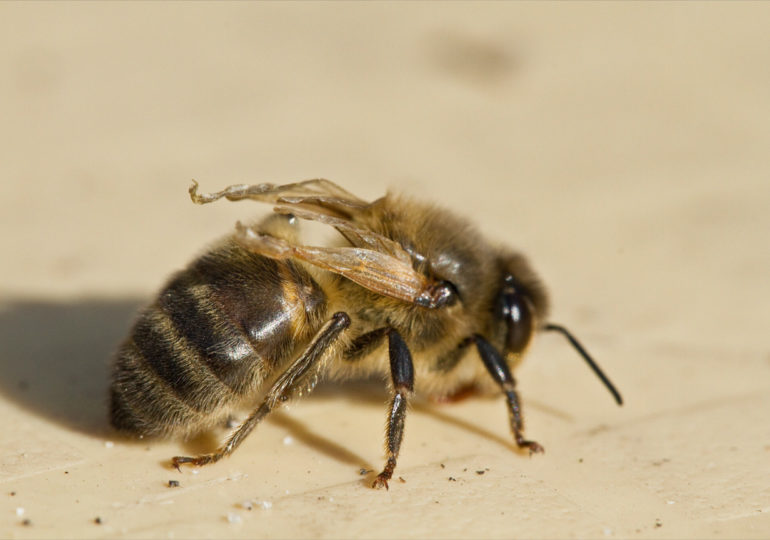 Véto-pharma
Véto-pharma The damaging effects of high varroa mite infestation and high prevalence of DWV (Deformed Wing Virus) on honey bee colony health are well known1 and continue to be a widely investigated subject. However, honey bees in the United States and elsewhere are also frequently exposed to other potential risk factors in the environment, notably pesticides that are commonly used in agriculture. Thus far, we do not know much about possible interactions between varroa infestation, viral prevalence in the colonies and susceptibility of honey bees towards agricultural insecticides that are commonly used by farmers in the United States.

In this study, the authors have focused on potential effects of varroa infestation and the presence of DWV in honey bee colonies on the bees’ sensitivity towards commonly used agricultural pesticides. They treated one group of colonies with Apivar twice a year (spring and autumn treatment) and left the other groups of colonies untreated to promote high varroa infestation and DWV prevalence. This enabled the authors to compare susceptibility of honey bees from both groups towards pesticide exposure. Bees were exposed to five different agricultural pesticides from the groups neonicotinoids, organophosphates, pyrethroids, sulfoximines and carbamates in cage studies. The expression of six immunity- and physiology-related genes in worker bees from both treatment groups was evaluated as well.
The results of this study show that Apivar reliably reduces varroa infestation and DWV-prevalence in the colonies and leads to significantly lower worker bee mortality in autumn. Further, high varroa load and DWV titers made honey bees more susceptible towards five commonly used agricultural insecticides in the United States by weakening immunity and physiology-related genes. Worker bees from treated colonies with low varroa infestation and DWV levels consistently demonstrated lower susceptibility towards the five commonly applied agricultural insecticides that were tested in this study.
1 – Joachim R. de Miranda, Elke Genersch, Deformed wing virus, Journal of Invertebrate Pathology, Volume 103, Supplement, 2010, Pages S48-S61, ISSN 0022-2011, https://doi.org/10.1016/j.jip.2009.06.012.
APV-115-US-N01-01/22
Copyright picture: Klaas de gelder
Join the Véto-pharma community and receive our quarterly newsletter as well as our occasional beekeeping news. You can unsubscribe at any time if our content does not suit you, and your data will never be transferred to a third party!
© 2019-2025, Véto-pharma. All rights reserved